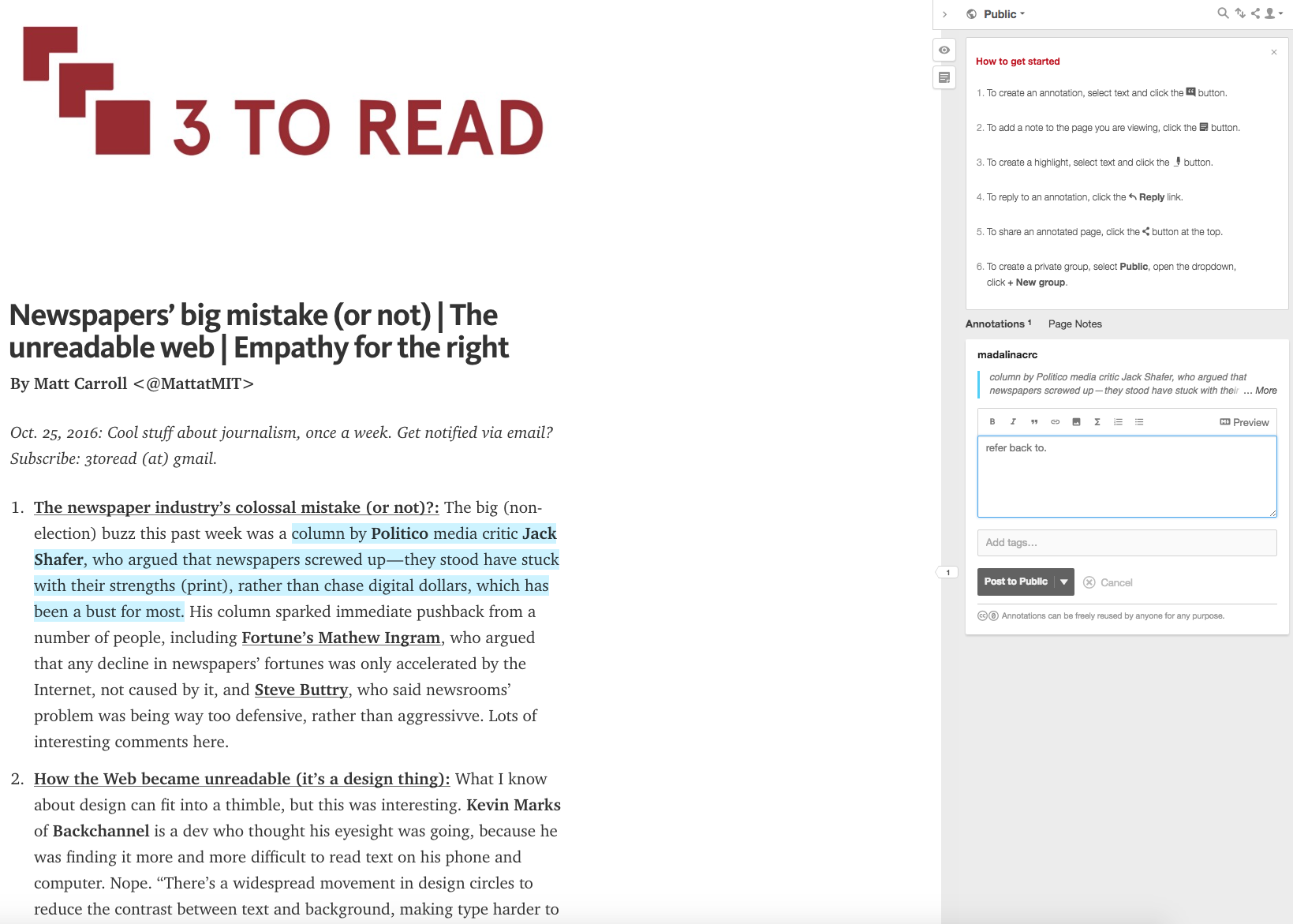Tool for journalists: Hypothes.is, a Chrome extension for annotations
Hypothes.is can help journalists collaborating on a project or investigation to collect, organise and discuss their research in one place


Hypothes.is can help journalists collaborating on a project or investigation to collect, organise and discuss their research in one place

This article was migrated from an old version of our website in 2025. As a result, it might have some low-quality images or non-functioning links - if there's any issues you'd like to see fixed, get in touch with us at info@journalism.co.uk.
What is it? Hypothes.is is a Google Chrome browser extension that allows members of a team working on the same project, such as an investigation, to annotate relevant information found online, discuss it and organise their research.
How is it of use to journalists? Investigative journalists, particularly those working on larger, collaborative projects involving different languages and time zones, rely on a number of tools to help them be more productive and keep their materials organised and easily accessible for everyone.
Hypothes.is aims to facilitate research and collaboration during newsgathering, but also after the project has been published online.
Journalists sometimes publish source documents alongside their stories, and allowing readers to access these materials not only increases transparency, but enables them to contribute their expertise and gain an insight into the investigative process.
According to the website, the browser extension is designed to "bring a new layer to the web" by leveraging annotation technology, enabling "sentence-level critique or note-taking on top of news, blogs, scientific articles, books, terms of service, ballot initiatives, legislation and more".
The tool, developed by a San Francisco-based non-profit organisation of the same name, is free and open-source. It has already been adopted by members of the European Investigative Collaborations (EIC) Network, Journalismfund.eu and German not-for-profit outlet CORRECT!V.
In May, CORRECT!V created a tutorial encouraging its readers to use Hypothes.is to comment on documents published online as part of the TTIP Leaks and contribute their expertise and suggestions.
How it works
Go to https://hypothes.is/ and install the Google Chrome extension. You will have to sign up for a free account before you're ready to start annotating web pages.
Once you're logged in, you can navigate to any web page of interest and enable the extension by clicking its icon at the top right of your browser, next to your bookmarking feature.
Double-click a paragraph of text from an article to highlight it and you will see two options pop up, 'annotate' and 'highlight'.
Highlights are marked in yellow and are only visible to the author, while annotations include text formatting options and can be public, private or shared with a specific group.

To create a new group, click 'public' at the top left and choose 'new group' from the drop-down menu to invite others to join.
You can also add tags to your annotations and use the search bar at the top to look for all materials in which a keyword or topic is mentioned, and leave replies on information annotated by other people.
There is also a feature for leaving notes attached to an overall document or web page to add context to annotations or come back to later.
After a story has been published, journalists can link individual annotations to the source document, so readers can access the relevant information while they are reading the story, without having to sift through pages of research.